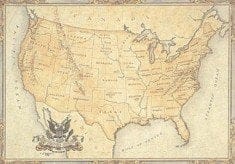
It’s MovieMaker’s 2014 edition of the Best Places to Live and Work as a Moviemaker! We’re counting down through our Top 10 Big Cities, Top 5 Small Cities, and Top 5 Towns—releasing one location a day for the entire month of January. The full list, published in MovieMaker‘s Winter 2014 issue, will be available on newsstands January 28.
Unlike previous years where locations were pitted against each other in a single pool, this year we separated the list into three distinct categories: Big Cities (pop. 500,000 and up), Small Cities (pop. 100,000 to 500,000), and Towns (pop. 100,000 and under). After months of research, interviews, and mathematical formulas, we boiled the rankings down to the essential elements. All locations were rated according to six criteria: Film Production in 2013 (shooting days, number of productions, dollars generated), Film Community and Culture (film schools, festivals, independent theaters, film organizations), Access to Equipment and Facilities, Tax Incentives, Cost of Living, and a General category that included lifestyle, weather, and transportation. Did your place of choice make the list? If not, maybe you should choose again if you’re serious about rooting yourself in a location that’s conducive to your career and life goals – or drop us a comment proposing a place we overlooked this year!
______________________
Top 10 Big Cities
#3. Austin, TX
Slipping a little from last year’s number one spot is Austin—home of the SXSW Film Festival, Alamo Drafthouse Cinema, Richard Linklater, Terrence Malick, and Robert Rodriguez. The list of Austin-based films released in 2013 is staggering (a record eight played at Sundance last year), as is the number of films produced in 2013 for future release: Linklater’s Boyhood (playing at Sundance this week), Rodriguez’ Sin City 2: A Dame to Kill For, Malick’s untitled next project, Jason Reitman’s Pale Blue Dot, and David Gordon Green’s Manglehorn to name a few.
“The support you get from your fellow filmmakers, in terms of advice, cast and crew referrals, feedback on your rough cuts and more, is just astounding,” said writer-director Brian Poyser (Lovers of Hate). “Success for one of us—be it a distribution deal, a slot at Sundance, or even a chance to make another movie—means success for all of us. And a low-budget filmmaker might have the opportunity to snag a top-flight cinematographer or production designer if they’re not working on a bigger-budget project.”
Cult mumblecore director Andrew Bujalksi (Computer Chess) agreed: “The culture is one of dropping everything you’re doing to go help out a comrade.”
Interestingly, Texas reserves the right to refuse its incentives (Texas offers up to a 22.5 percent film incentive, based solely on in-state spend – a straight cash grant, giving more savings than the standard tax credit) to projects that include inappropriate content or “portray Texas or Texans in a negative light.” Don’t piss them off, though, and you’ll enjoy more than 300 days of sunshine each year, a low cost of living, free permits in the city, free use of Texas owned property and parks, a free recycling program, and free police help. In true Lone Star fashion, Austin also offers three permanent western sets, like Willie Nelson’s Luck Texas Ranch, all of which were used to film projects like Lonesome Dove, Appaloosa, and The Alamo.
For more information about filming in Austin visit the Austin Film Commission.
Check back every day for the rest of January to see what other places made the list! Previous rankings:
BIG CITIES
10) San Francisco
9) Memphis
8) Portland
7) Philadelphia
6) Boston
5) Seattle
4) Los Angeles
To subscribe to MovieMaker Magazine, click here.
Share:




